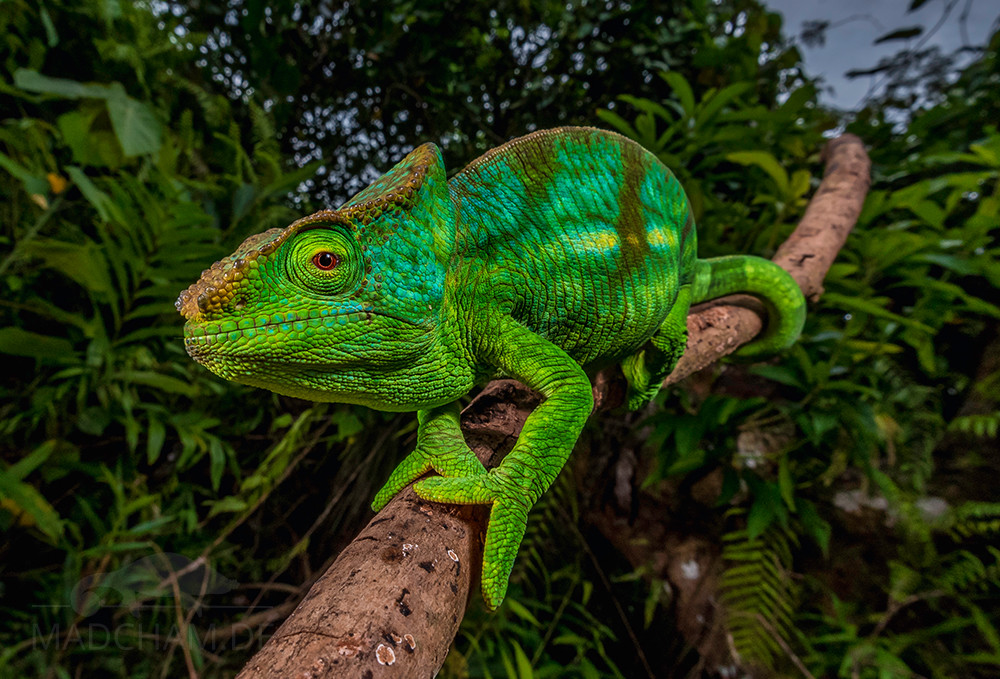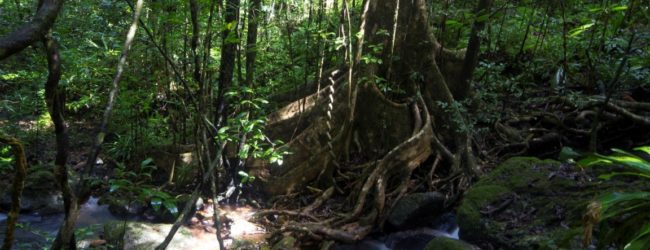Distribution:
Masoala National Park is located on the peninsula of the same name in north-eastern Madagascar. At the northern end of Antongil Bay, also known as the “Cradle of Whales”, lies the small coastal town of Maroansetra. The area is only accessible by plane from Madagascar’s capital, Tana, to Maroantsetra. The road along the east coast from Toamasina (Tamatave) upwards, although still in existence, is still officially designated as a route nationale, but it is in such a catastrophic condition that no one drives it voluntarily. Masoala itself consists mainly of primary forest and is only accessible by boat; the area around Maroantsetra has long since given way to secondary vegetation. Calumma parsonii parsonii, however, can be found not only in Masoala but in various places around Antongil Bay.
The colour variety “green giant” was for a long time a bit of a mystique, because for years there were hardly any photos of Calumma parsonii parsonii from the region around Maroantsetra. One reason for this is that the chameleons are very difficult to find here. In our experience, they prefer trees with a height of more than 15 m and only rarely come down much lower, for example, to lay eggs. In fact, the rarer finds may also have to do with the fact that there are no local guides specialising in reptiles in Masoala.
Appearance and size:
As the name suggests, the males of this colour variety are bright turquoise-green, just like the females. The eyelids are also green. Some of the males have a discreet, lightened lateral stripe on their body. In all animals of this colour variation we have noticed so far that the head shape seems to be somewhat more elongated than in the other colour variations of Calumma parsonii parsonii.
Table of weights

Weibchen = female, Männchen = male, Jungtier = juvenile, Gewicht = weight, Kopf-Rumpf-Länge = snout-vent-length
Since 2015, we have been measuring the weights of the Parsons chameleons we found in Madagascar, as far as the animals (and our scales) are able to do so. In 2023, we were able to measure the first “green giants”. So far, there are only a few weights, but in the long run, an average weight in relation to the head-torso length (measured from the tip of the nose to the cloaca) should be possible for each species from as many measurements as possible. It is important to know that all weights were measured towards the end of the rainy season (= best food supply), so these are probably maximum weights in Madagascar. Triangular symbols on females mean not pregnant, round symbols mean pregnant. In the case of Calumma parsonii parsonii we have so far a common table for all colour variants, as all four are the same species.
| Jan | Feb | Mar | Apr | May | Jun | Jul | Aug | Sep | Oct | Nov | Dec | |
| Average temperature | 24 | 25 | 25 | 24 | 24 | 23 | 21 | 20 | 21 | 22 | 23 | 24 |
| Minimum temperature | 20 | 21 | 20 | 20 | 18 | 17 | 16 | 16 | 17 | 17 | 19 | 20 |
| Maximum temperature | 28 | 29 | 28 | 27 | 25 | 25 | 25 | 25 | 25 | 27 | 27 | 28 |
| Rain days | 26 | 23 | 25 | 19 | 17 | 18 | 21 | 21 | 16 | 17 | 20 | 24 |
We have collected the data given above over several years with thermometers and hygrometers at the finding places of the chameleons. "Average temperature" means that values of a whole month have been calculated to one average value per month. For example all measured minimum temperature values of February have been calculated to one average minimum temperature for February. In plain language, this means single peak values of a day may be a little higher or lower than the average minimum and maximum temperatures. It is possible that a location has an average maximum temperature of 29°C, but one day during that month it had 33°C or even 35°C there.
Several examples of a daily pattern of temperatures in Masoala in the rainy season are given below. They were recorded with data loggers in 2023.



Masoala's rainforest is located at the coast with broad side to Antongil bay which behaves more like an open sea concerning climate. Accordingly, spring brings cyclones each year. During rainy season, it rains very intensively on a daily base. But also dry season is not really dry but has regular precipitation.
From October to April it is warmer than usual in Masoala, with temperatures reaching over 30°C in sunny spots. At night, temperatures drop only slightly. The rest of the year, from May to September inclusive, it is different: at night, during the dry season, temperatures plummet to 16°C at night, while at night it is still Mediterranean warm. In 2023 we measured relative humidity with data loggers on several days in Masoala during the rainy season, the data can be found below.


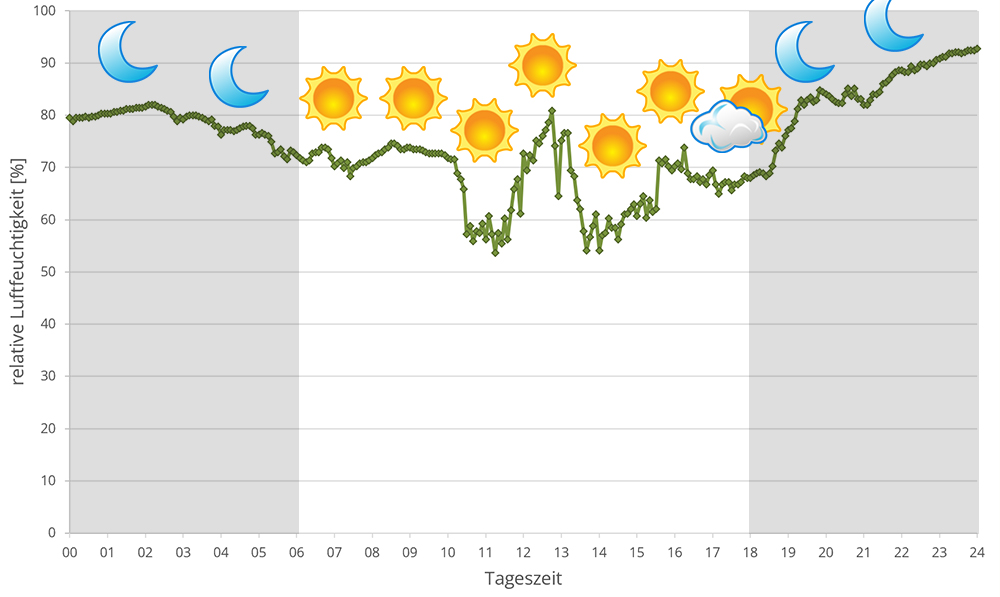

 Tageszeit = day time, Sonne = sun, Halbschatten = half shade, Schatten = shade
Tageszeit = day time, Sonne = sun, Halbschatten = half shade, Schatten = shade
We have measured UVB data with a Solarmeter 6.5 in spring (end of March) at the peak of activity of chameleons in Madagascar. We always measured the values that a chameleon could maximally reach in its habitat.
In 2023, in addition to other climate data, we also measured the air pressure at the places we visited in Madagascar. The following data is from several days during the rainy season in Masoala. The X-axis shows the time of day or night. In Madagascar, the day begins around 6 am, and night falls at 6 pm. The Y-axis shows the atmospheric pressure in hPa.
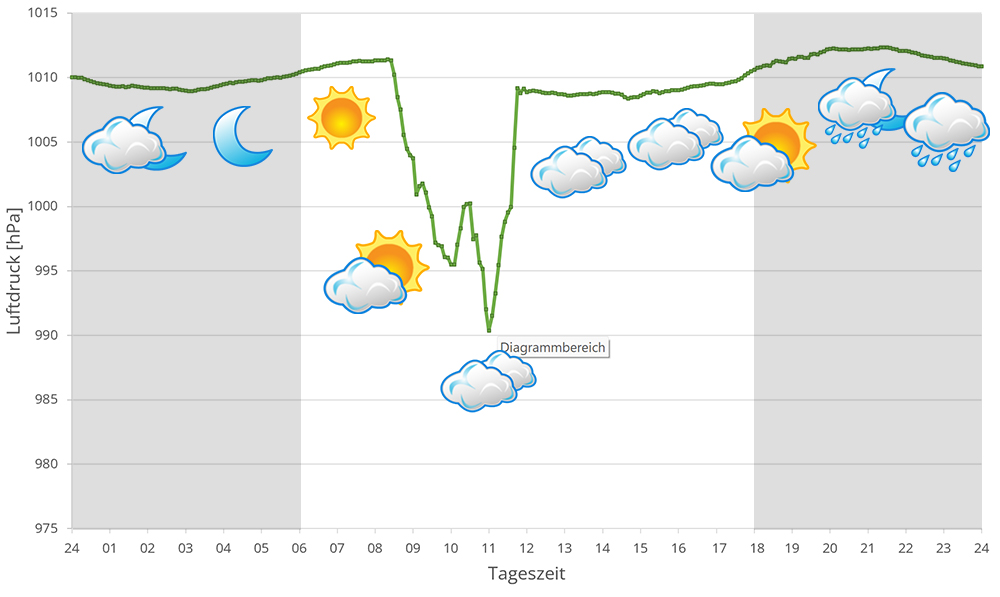

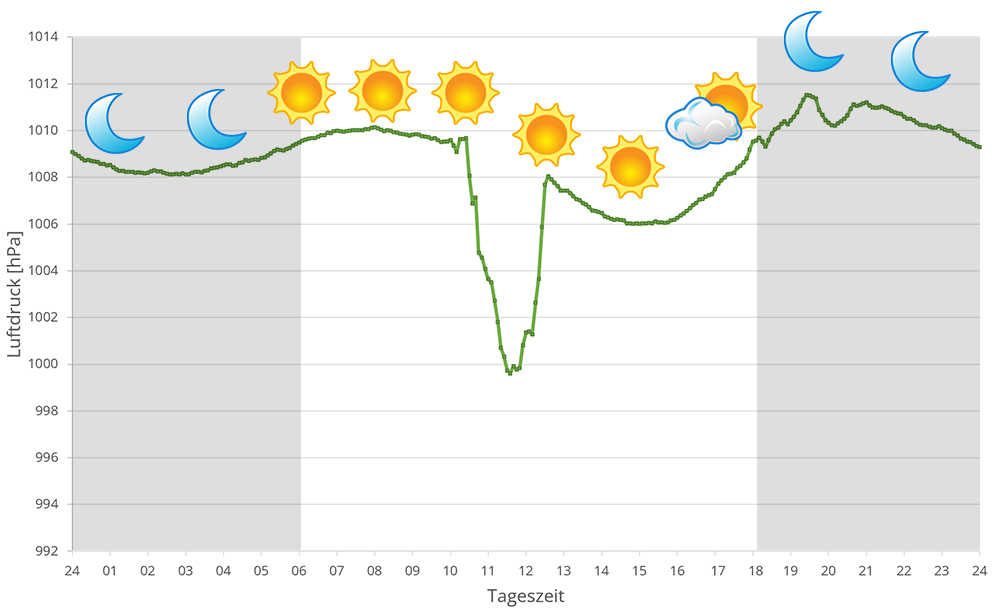
Habitat:
Masoala is a fantastic pristine rainforest with extremely dense growth. Some trees are huge, lianas are everywhere, and the ground is streaked by small streams and rocks. Moss covers the rocks, nest ferns, and lichen cover larger trees. Calumma parsonii prefers to roam around high up in the tree crowns.

